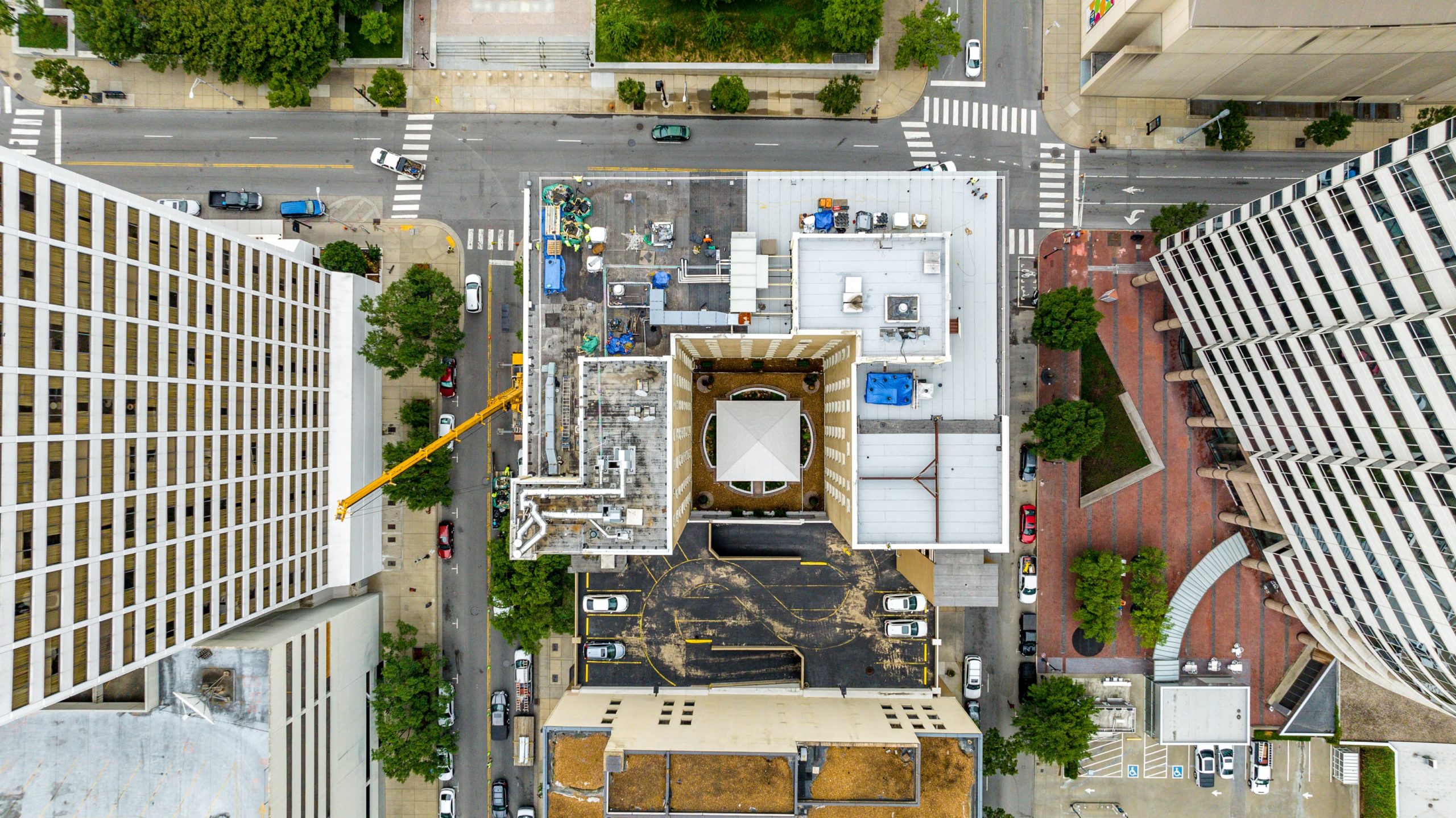As a commercial property manager or building owner, one of the most important concerns you have is the longevity of your roof. After all, it’s your first line of defense against the elements, and it ensures the comfort and safety of your occupants. But how long can you expect your roof to last?
With nearly 70 years of experience in commercial roofing in Tennessee and Alabama, our team at Maxwell Roofing understands the factors that impact roof lifespan. We’ve also witnessed the evolution of our industry as materials become more durable, maintenance practices shift, and building owners increasingly prioritize roof longevity.
After partnering with hundreds of building owners and property managers over the years, one question consistently tops our list of inquiries: “How long is my commercial roof expected to last?” In this blog, we hope to answer some of the most common questions related to roof longevity to help you make informed decisions about your property.
1. What is the expected lifespan of a commercial roof system?
The good news is that with proper care and maintenance, a well-constructed roof system can last 20 years or more. However, this isn’t a one-size-fits-all answer. The lifespan can vary significantly depending on several factors, including:
- Interior conditions. Is your building subject to high humidity, temperature fluctuations, or chemical exposure? These factors can put stress on your roof and shorten its lifespan.
- Building design. The slope of your roof, the presence of roofing penetrations like skylights or vents, and the overall structural integrity all play a role in how long your roof will last.
- Maintenance best practices. Regular inspections, prompt repairs, and proper cleaning are essential for extending the life of your roof. Neglecting these crucial steps can lead to rapid deterioration and costly repairs.
2. What factors can potentially shorten the lifespan of the roofing system?
The biggest threat to your roof’s longevity is neglect. Just like a car, your roof needs routine attention. Annual inspections are essential, especially after major weather events, to catch potential problems before they escalate. But neglect isn’t the only culprit. Here are other factors to watch out for:
- Abuse. If your roof is used for purposes it wasn’t designed for (e.g., excessive foot traffic, storage), it can suffer premature damage.
- Improper installation or maintenance. Inexperienced contractors or workers unfamiliar with your specific roof type can cause problems during installation or repairs.
- Incompatible materials. Using the wrong materials for penetrations or repairs can lead to chemical reactions and compromise the integrity of your roof.
- Changes in building use. If you change the interior function of your building (e.g., adding a restaurant tenant with grease exhaust), it can stress your roof system and lead to unexpected issues.
3. What can we do to extend the lifespan of our commercial roofing system?
Maximizing your roof’s lifespan starts with choosing the right system and prioritizing its health. Here are some key considerations:
- Make regular inspections and maintenance a priority. This is the single most effective way to catch problems early and prevent them from becoming major issues.
- Choose a roof system that’s right for your building and its intended use. Don’t prioritize cost over compatibility. For example, a modified bitumen system might require a more significant up-front cost, but the long-term costs are often less because this system offers superior longevity. In the same way, single-ply membranes are a more cost-effective solution that can last 20+ years, but maintenance costs will be higher, especially toward the end of the roof’s life cycle.
- Minimize penetrations and foot traffic on your roof. Every hole is a potential entry point for water and wear. Additionally, keep unnecessary foot traffic off your roof. Every step increases the risk of damage, especially on single-ply membranes.
- Repair any problems promptly. Don’t let small leaks or tears turn into major headaches.
4. What should we do if we think it might be time to replace our roof in the next 2-3 years?
If you suspect your roof may need replacing within the next 2-3 years, proactive planning is key. Here’s what you should do:
- Consult with a qualified roofing professional who can help you make key decisions. Choosing a qualified roofing contractor that you know and trust is an important business decision. They can assess your roof’s condition and recommend the best replacement options.
- Develop a budget. The next step in preparing for a roof replacement is to develop a budget. It’s important to be proactive rather than reactive.
- Plan ahead for logistical issues. Logistical obstacles and unexpected setbacks can make a significant difference in a successful project. For example, if you manage a manufacturing plant, you’ll want to consider how a reroofing project will affect your day-to-day operations: Will the plant need to shut down for the duration of the project? Or will the roofing contractor need to plan to work specific hours to avoid a shutdown? Making important decisions like these before you get started can help your commercial roofing contractor develop an appropriate scope of work and mitigate the possibility of running into any issues when it’s time to start your re-roofing project.
Protect Your Investment with Maxwell Roofing
Your commercial roof plays a vital role in your business success. Don’t let its lifespan be a guessing game. By understanding the factors affecting its longevity and implementing proactive measures, you can ensure your roof continues to faithfully protect your investments for years to come. If you have questions or concerns, don’t hesitate to reach out to our team at Maxwell Roofing.
We also encourage you to check these additional resources:

